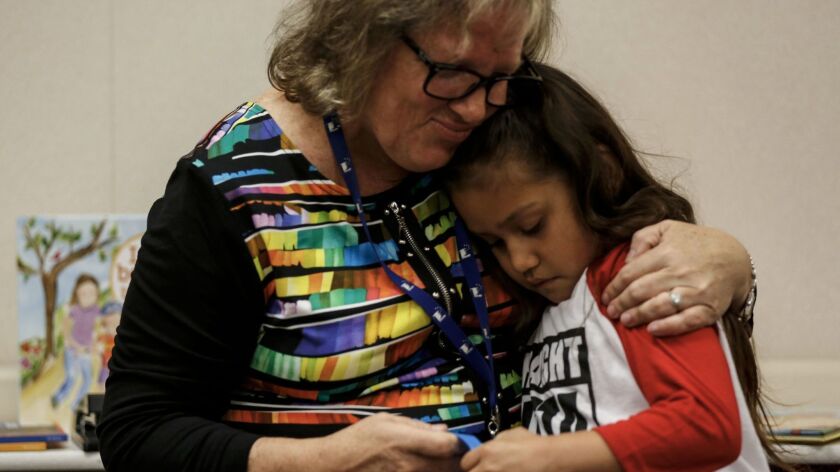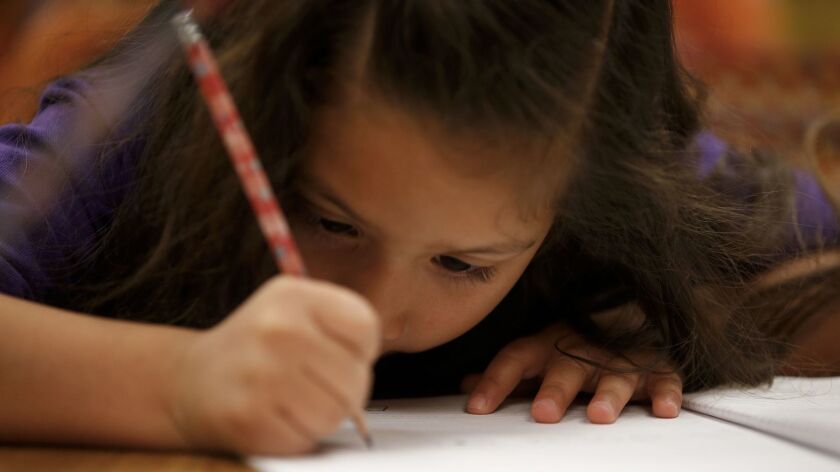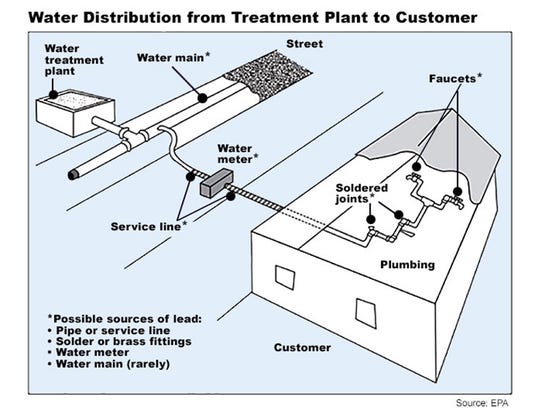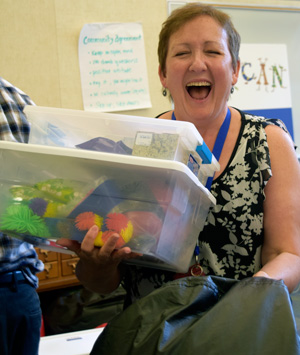
Teacher Maryellen Whittingham was worried about Giuliana Tapia, 5, who entered her kindergarten class at the Telesis Academy in West Covina far behind other students, unable to recognize letters or sing the alphabet.
(Mark Boster / Los Angeles Times)
Giuliana Tapia was way behind her classmates.
She was just 5 years old, starting kindergarten at Telesis Academy of Science and Math in West Covina.
At a kindergarten screening two months before her first day, she happily chattered about her dog Toodles, her favorite color pink, her Santa Claus pajamas, her nickname Gigi, her outings with dad to see SpongeBob SquarePants movies.
But many of her 21 classmates already knew most of the alphabet, colors and shapes. Two of them could even read all 100 words — at, the, there, like — that kindergartners are expected to know by the end of the year.
About half had been to preschool; Giuliana had not.
“I don’t know,” she said when she was asked to identify letters on a sheet of paper.

Kindergartner Giuliana Tapia struggles to write her name on the first day of school in Maryellen Whittingham’s class at the Telesis Academy.
(Mark Boster / Los Angeles Times )
Then, anxiously, “But that’s OK, right?”
Giuliana is not atypical of Latino children, who have the lowest rates of preschool attendance among all racial and ethnic groups. A 2015 UC Berkeley study of 4,550 children nationwide found that although Latino children showed roughly the same level of language comprehension as their white peers at 9 months old, four-fifths had fallen up to 5 months behind by the time they were 2.
The study found that only 28% of the Mexican American mothers who spoke English at home, as Giuliana’s mother does, read to their children daily, compared with 59% of white mothers.
No preschool. No daily stories read out loud. Could Giuliana catch up?
To read full story follow this link: http://www.latimes.com/local/california/la-me-ln-kindergarten-expectations-adv-snap-20161109-story.html





































 Fourth grade teacher Marsha Wolfe is excited to have sensory tools in her classroom (above)
Fourth grade teacher Marsha Wolfe is excited to have sensory tools in her classroom (above) 